|
|
|
Winchester M-70 Varmint Trigger Spring
Significantly lighten your rifle trigger pull. The exact amount of creep, overtravel, and
weight of pull are dependent upon the type and amount of tuning accomplished by your gunsmith.
| Picture #1 | 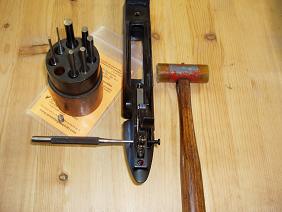 |
This spring fits the first 70 years of M-70 Winchester production ( 1936 to 2006 ). All variations,
and all calibers.
This spring can be installed with the tools shown in ( picture #1 )
I believe that a complete "Trigger Job" on an M-70 Winchester is something that should only be done by a gunsmith
or under the supervision of a person who is thoroughly familiar with both the M-70 trigger, and the M-70 safety. And
especially, that he be familiar with how certain work on the trigger or sear can effect the operation of the safety.
However, just replacing the trigger spring with no other changes is a simple operation that can provide good results with
a very small expenditure of time and money.
All pull weights were taken with a Lyman
digital trigger scale. No adjustments were made to the trigger before or during the test. The table lists
10 consecutive weights of pull for each spring.
With Original Spring All
weights are listed in pounds & ounces. | 5.13 | 5.13 | 5.14 | 5.10 | 5.7 | | 5.6 | 5.9 | 5.11 | 5.6 | 5.6 |
With My "Hunter" Spring
| 3.4 | 3.4 | 3.3 | 3.5 | 3.4 | | 3.3 | 3.3 | 3.5 | 3.5 | 3.2 |
With My"Varmint" Spring
| 2.6 | 2.6 | 2.6 | 2.7 | 2.4 | | 2.4 | 2.7 | 2.5 | 2.7 | 2.5 |
Any handling or work
on a firearm must always
start by being certain that the firearm is not loaded.
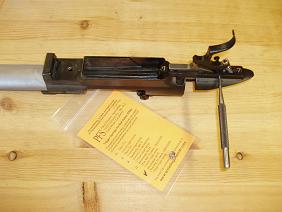
| Picture
#2 |  | | Picture #3 | 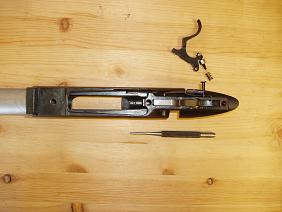 | | Picture #4 | 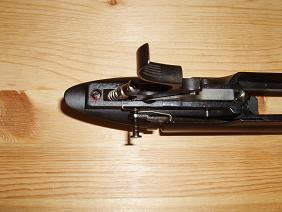 | | Picture #5 | 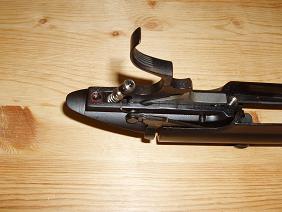 | | Picture #6 | 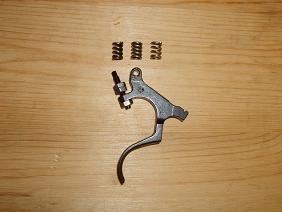 |
The next step in changing an M-70 trigger spring is to drive out the trigger
pivot pin, but only far enough that the trigger is released, and can be lifted out of the receiver.
In picture #3 we see the un-modified trigger and target trigger
spring ready to re-install in the receiver.
Here,
the trigger and trigger spring have been replaced in the receiver, the trigger aligned with its pivot pin and that pin has
been tapped back in just far enough to hold the trigger in place.
In this picture the trigger pivot pin has
been driven all the way back in place. This should complete the mechanical phase of the new trigger spring installation.
Now it will be necessary to check and verify the safe and reliable function of both the trigger and the safety.
This is best done by a gunsmith.
From left to right, we see the
original trigger spring, the "Hunter" trigger spring, and the "Varmint" trigger spring.
IF YOU WANT A LIGHTER TRIGGER PULL, YOU
NEED A LIGHTER TRIGGER SPRING!
No liability is expressed or implied
for damage or injury which may result from the improper installation or use of this product.
Item #035
|

|